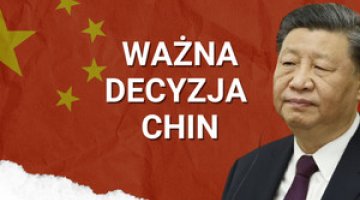Breaking the deadlock: the EU-UK security and defence partnership
On 19 May, during the EU–UK summit in London, a breakthrough was achieved in bilateral relations following the United Kingdom’s formal exit from the EU in 2020. Both sides adopted a Joint Statement, a Security and Defence Partnership, and a Common Understanding on a Renewed Agenda for European Union – United Kingdom Cooperation. The signing of these documents was made possible by compromises on previously contentious issues (such as fisheries). While the security and defence partnership opens up prospects for cooperation in numerous areas – from the defence industry (e.g. UK participation in the EU’s SAFE instrument) to rapid response forces – its deepening will depend on the political will of both parties and the conclusion of detailed agreements.
A long road to post-Brexit cooperation in the sphere of security
Before leaving the EU in February 2020, the United Kingdom had been a leading voice among member states sceptical of enhancing cooperation within the framework of the EU’s security policy. Nevertheless, even before Brexit was finalised, London had stressed the need to maintain collaboration on security matters with the EU as it developed its own instruments in this field. However, no treaty-based foundation for such cooperation was established at the time, largely due to strained relations between the British government and the EU, including on migration and fisheries. London also expressed growing concerns over the potential negative consequences for its domestic defence industry, stemming from the exclusion of British companies from EU research and development programmes, joint procurement initiatives, and rising protectionist tendencies in the European defence sector. The turning point came with Russia’s invasion of Ukraine, which prompted both sides to coordinate their support for Kyiv (training missions) and align their sanctions policies against the Kremlin. A further shift in the UK’s position followed the Labour Party’s victory in the 2024 general election. The new government under Prime Minister Keir Starmer pledged a reset in relations with the EU and a strengthening of ties with key European partners.
EU member states long lacked a unified position on the form of post-Brexit cooperation with the United Kingdom. Some – particularly countries on the eastern flank, the Nordic states, and Germany and Italy – advocated for an enhanced security and defence partnership regardless of ongoing disputes in other areas. Others (most notably France) insisted on a comprehensive approach to formalising bilateral relations, one that also took EU interests in economic, migration, and visa matters into account. The policies of Donald Trump, the threat posed by Russia, and the need to consolidate efforts in continued support for Ukraine widened the scope for compromise on both sides. From the EU’s perspective, it is important that the UK remains sufficiently closely aligned with the bloc, so that in the event of disagreements with the current US administration, it is more likely to side with Europe. Debates on strengthening European military capabilities – in the context of the anticipated reduction in US involvement – have also drawn the two sides closer together. Prior to the agreements signed on 19 May, the UK had already been cooperating with the EU within the framework of the PESCO Military Mobility project, and its training operation for Ukrainian soldiers, INTERFLEX, had been closely linked to the EU’s EUMAM Ukraine mission.
During the London summit, three documents were signed: the Joint Statement, the Common Understanding on a Renewed Agenda for European Union – United Kingdom Cooperation, and the Security and Defence Partnership. The first affirms the United Kingdom’s and the EU’s shared values (including human rights, the primacy of international law, and democracy), as well as a common view of the key challenges to global security. It particularly highlights the condemnation of Russia’s aggression against Ukraine and continued support for Kyiv, and reaffirms the commitment of UK and EU NATO members to the Alliance. The Common Understanding on a Renewed Agenda for European Union – United Kingdom Cooperation, in turn, provides a sectoral overview of areas of mutual interest where cooperation could be further enhanced.
Hoping for more
The most extensive of the signed documents, the Security and Defence Partnership, is largely a declaration of intent, containing few binding commitments. It affirms the alignment of the UK’s and the EU’s defence interests, grounded in the shared international environment faced by both parties. In both geographical and thematic terms, it effectively covers the entire scope of foreign and security policy concerns relevant to the EU and the UK: from Ukraine to the Indo-Pacific and the Arctic, and from hybrid threats and non-proliferation to crisis management.
The most important elements of the agreement concern the UK’s potential participation in EU missions and operations, as well as the EU permitting British involvement in its defence industry support programmes and the development of member states’ military capabilities. In the first area, both sides expressed their willingness to take part in joint exercises, and the UK pledged to consider participating in EU missions and operations. Any future British engagement in the EU’s new format of Rapid Deployment Capacity (RDC; see ‘The EU Rapid Deployment Capacity: political priorities and real needs’) would be significant, including through the provision of strategic enablers (such as air transport and intelligence operations).
On the issue most crucial for London – cooperation between the defence industries and UK participation in EU support programmes for the sector (i.e. allowing British companies to apply for EU grants and enabling the use of EU loans to finance purchases from UK companies) – the conclusion of further detailed agreements will be required. This includes, for example, an administrative arrangement with the European Defence Agency (currently in place with Norway, Serbia, the United States, Switzerland, and Ukraine), or a bilateral agreement as foreseen in the provisions of specific regulations, such as the one governing the SAFE defence loan instrument proposed by the European Commission in March (see ‘The White Paper: the EU’s new initiatives for European defence’). These proposals were supported by countries that procure equipment from the British defence industry (including Poland), while others (including France and Belgium) adopted a much more protectionist stance. The Common Understanding on a Renewed Agenda for European Union – United Kingdom Cooperation, signed alongside the agreement, refers to exploring avenues for mutually beneficial cooperation enabled by the SAFE instrument. The Security and Defence Partnership itself grants the United Kingdom the possibility of participating in procurement consortia alongside EU member states, Norway, and Ukraine. However, it does not allow those countries to make purchases from British companies.
The agreement also commits both parties to hold regular consultations, including biannual meetings between the EU High Representative for Foreign Affairs and Security Policy and the UK Secretaries of State for Foreign Affairs and Defence. It additionally provides for the regular invitation of UK delegates to EU ministerial meetings and European Council summits and establishes a format for ongoing dialogue aimed at implementing the partnership. Declarations on intensifying dialogue and information-sharing are also included throughout the agreement in various areas (cybersecurity, countering disinformation, maritime security, etc).
EU security agreements with third countries
The EU–UK Security and Defence Partnership aligns with similar agreements the European Union has concluded in recent years with third countries. Since Russia’s full-scale invasion of Ukraine, Brussels has signed seven tailored security and defence partnerships. Aside from the United Kingdom, these were signed with Moldova, Norway, South Korea, Japan, Albania, and North Macedonia. These partnerships do not represent formal ‘alliances’ with the EU; they are legally non-binding and are intended to provide a basis for developing enhanced cooperation, should both parties demonstrate the will to flesh out the framework in practical terms. This new model of agreements highlights like-minded partners – countries with which the EU closely shares security interests and has converging views on the international situation. Despite certain differences, the partnerships share a number of common elements: participation in EU missions and operations, efforts to counter hybrid threats, cooperation in strategic communication and combatting disinformation, non-proliferation and arms control, consultation on defence initiatives, coordination of action in international fora, joint training and education programmes, and a commitment to the Women, Peace and Security agenda.
From the perspective of European security – in light of the Russian threat and the potential reduction in US military presence on the continent – the most critical aspect is the implementation of agreements with the EU’s closest partners and NATO allies, namely the United Kingdom and Norway. Currently, Brussels is negotiating a similar partnership with Canada, and, due to geopolitical considerations and military capabilities, Turkey is being identified as a potential future signatory. As regards Norway, the partnership focuses on supporting Ukraine, participating in EU exercises, missions and operations, ensuring maritime security (including the protection of critical undersea infrastructure), gaining access to defence industry development initiatives (such as EDIP), as well as cooperation in space and consular affairs.
Equally important is the partnership with Moldova, a country exposed to multifaceted aggression from Russia. This agreement has been tailored to focus on building resilience against hybrid threats, with particular emphasis on cybersecurity and combatting disinformation. A similar agreement has not yet been signed with Ukraine, despite the fact that the EU currently maintains its most extensive military cooperation with that country (arms deliveries and training of Ukrainian forces).
The Indo-Pacific is another area where the EU seeks closer security ties with like-minded partners. Partnerships with Japan and South Korea emphasise the interdependence of security dynamics in both regions and highlight the need to enhance cooperation between naval forces, in maritime and space security, and in the fight against broadly defined hybrid threats. However, they do not include provisions for cooperation between defence industries.





